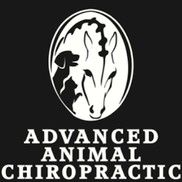Easing Your Pet's Arthritis

Carbohydrates have been shown to be highly inflammatory, so why then are specialized arthritis diets filled with them? This is a question I find myself asking time and time again. Excessive carbohydrates lead to increased inflammation in the body. Inflammation in itself leads to arthritis and more inflammation. So again, why on earth are we putting more and more carbs into our pets that are already suffering from arthritis?
Carbohydrates have been shown to be highly inflammatory, so why then are specialized arthritis diets filled with them? This is a question I find myself asking time and time again. Excessive carbohydrates lead to increased inflammation in the body. Inflammation in itself leads to arthritis and more inflammation. So again, why on earth are we putting more and more carbs into our pets that are already suffering from arthritis?
What to Feed and Supplementation
Unfortunately, too many of our pets are not fed a species-appropriate diet. What may be the best solution for a pet with arthritis would be to switch to a high-protein and low-carbohydrate diet. In addition, supplementing with Omega-3 rich oils (naturally anti-inflammatory), as well as putting some joint support into the daily regimen, can make a world of difference. A species-appropriate diet can be found in many different forms, starting with raw and ranging to high-quality, grain- and corn-free, non-GMO kibble. There are several other options that can fit the bill as well.
Weight Loss
Not only will a species-appropriate diet help keep your pets’ joints healthy, but it will also help to keep them at a healthy weight. A diet higher in protein tends to keep your pet at an appropriate weight, whereas carbohydrates tend to cause weight gain and water retention, much as they do in humans. Another huge issue when it comes to arthritis is the increasing amount of overweight animals. Pets on high carbohydrate diets tend to put on an excessive amount of weight, something that then puts unnecessary pressure on the joints.
Developmental Years are Crucial
 Another early contributor to food-related arthritis has to do with feeding a high-carb diet during the early developmental years. An animal given too many carbohydrates tends to put on significant amount of weight in a very short amount of time. When an animal basically explodes with growth it can put a significant amount of stress on those developing joints. Cartilage will lag in its development and will ultimately experience deficits.
Another early contributor to food-related arthritis has to do with feeding a high-carb diet during the early developmental years. An animal given too many carbohydrates tends to put on significant amount of weight in a very short amount of time. When an animal basically explodes with growth it can put a significant amount of stress on those developing joints. Cartilage will lag in its development and will ultimately experience deficits.
What else can you do?
- Keep exercising your pet! The more your pet moves, the better those joints will feel. Movement inhibits the pain tract inside the body, thus those who move often feel less pain and stiffness.
- Massage, massage, and massage! Who doesn’t love a good rub down? Make an effort to give Fifi or Fido regular massages to keep the muscles nice and loose, while also moving the joints and stimulating lymphatic drainage.
- Acupuncture is AMAZING at pain relief and regulation. This therapy can do absolute wonders for a pet in pain.
- Chiropractic treatments are imperative for those with arthritis and just as important for those hoping to prevent the condition. Chiropractic adjustments help to maintain proper alignment and joint motion and they can also relieve any secondary conditions that may pop up as a result of compensating for arthritis.
- Supplement with Omega-3 and joint support products.
- Passive range of motion exercises are wonderful for your pet. Mimicking normal active range of motion movements will help stimulate the nerves and the muscles around certain joints. This can help to improve nervous system function and relieve pain.
- Hydrotherapy is fabulous at encouraging range of motion exercises to strengthen the core and the joints while also allowing them to heal!
If you even do a few of the options listed above, a pet with arthritis will thank you. Starting from infancy, feeding the right diet and then supplementing throughout development and adulthood makes a huge difference. I consider my own pets a testament to this, as my youngest has been eating a raw diet for years and he doesn’t have even a bit of arthritis. Our oldest has some as a result of being rescued late in life. He has bilateral luxating patellas and had been fed a high-carbohydrate diet almost his entire life, while also being inactive because his previous owners didn't support a healthy and active lifestyle for him. After taking him into our household, this little man dropped excess weight, was switched to a high-quality and grain-free kibble that is high in protein, and has more energy than we can manage sometimes.
Age is just a number; don’t let your pet’s arthritis tell him he’s a senior when really he has a lifetime left to live! If you have questions or concerns, please feel free to contact us or consider calling the store at (248) 548-3448 to schedule a Tuesday chiropractic session for your pet.


Comments
Be the first to comment...